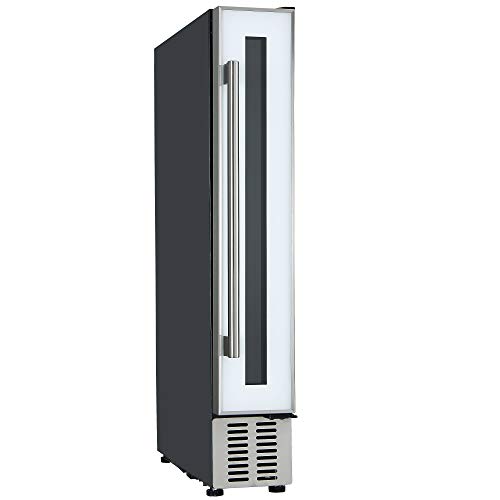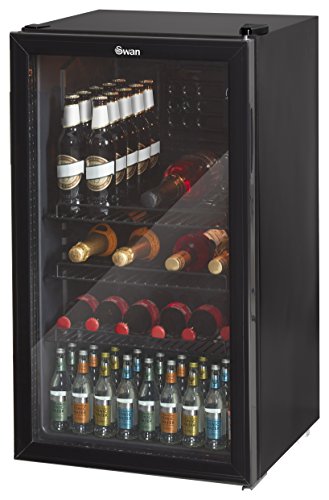You'll Be Unable To Guess Wine Refrigerator Built In's Secrets
페이지 정보
작성자 Lara 댓글 0건 조회 30회 작성일 24-09-20 08:05본문
 Energy Efficient Wine Storage With a Wine Refrigerator Built in
Energy Efficient Wine Storage With a Wine Refrigerator Built inThis efficient built-in wine refrigerator lets you store and serve your wine at a perfect temperature. You can store white and red wine separately in two temperature zones to preserve their full flavour.
Expertly designed to blend seamlessly into your cabinetry, these units could be placed under countertops to provide convenience in accessing a refreshing glass of Riesling after dinner. They require adequate ventilation and clearance in order to disperse the heat.
Size and Capacity
A wine refrigerator that is built-in provides a sleek and stylish alternative to the bulky freestanding units. Built with front vents, these wine coolers can be recessed into counters or cabinets to create a seamless design. They also allow for an easier storage solution, allowing you to easily convert from wine to cold beverages.
With capacities that can reach 368 bottles These wine refrigerators are made for serious collectors who have large collections. These units prioritize storage capacity and precise climate control to ensure that your wine is protected over the long run. These units are ideal for basements, garages, or areas that are not conditioned, in which a more durable storage environment is required.
The capacity to cool wine fridges is usually measured in terms of the number of standard Bordeaux-style bottles it is able to hold. It is important to think about whether your collection of wine includes other sizes of bottles like Champagne or Burgundy. This will affect your capacity requirements as these bottles require more space than a regular Bordeaux bottle. Some wine refrigerators include adjustable shelves that provide flexibility to store various sizes of bottles.
In addition to the dimensions of your wine fridge, you'll have to think about where to place it. If you're planning to install it in cabinets already in place, you'll need to allow 6 inches clearance in the rear, and on both the right and the left side. This allows the heat created by the wine refrigerator to escape, and also prevent overheating.
You should think about installing one of these high end wine fridges to the kitchen if you're planning to splash out on the most expensive model that comes with an impressive stainless-looking finish. With their sleek and elegant doors they are the ultimate in luxury and will create an impressive piece of furniture to your home. They are also available with larger capacities and are ideal for those who enjoy large gatherings and entertaining. With a range of features, including dual-zone cooling and UV protection these wine refrigerators are ideal for those who want to step up their hosting game up to the next level.
Ventilation
If the wine refrigerator isn't properly ventilated, hot and humid air will accumulate inside and the refrigerator could overheat. Ventilation is essential because it allows the cooler to maintain a consistent temperature and humidity level while also ensuring against fluctuations in temperature that could damage the bottles or alter the taste of the wine. To ensure that your wine cooler under counter fridge is equipped with the proper ventilation, check the unit after it has been in operation for a few hours. If the refrigerator is cool to the touch, it is ventilated properly.
The majority of wine refrigerators have an internal temperature sensor that monitors the temperature within the cooler and alerts you when it goes out of the range. Some models have dual temperature-controlled zones to allow you to store different types of wines at ideal serving temperatures.
The ideal temperature for storage of wine is between 55-66 degrees Fahrenheit. This will stop cork mold and other issues that can harm your collection. Some models come with a lamp that will light up when the temperature inside is lower than your desired level.
A built-in wine refrigerator could be the Best wine fridge uk option for your collection, depending on the storage needs you have. They can be placed effortlessly under countertops in kitchens or in bar areas for guests with an easy access. Some models come with front ventilation which means they can be mounted flush together with cabinetry to create a an elegant appearance.
To install a wine refrigerator, it is necessary to take care when measuring the space and account for the width of the cabinet. The fridge must be at least a few inches away from the wall on all sides to permit proper airflow. A wine fridge that is pushed against a wall or cabinet could block the vents, preventing heat from venting. Freestanding wine refrigerators have rear or side vents to distribute heat effectively.
Installation
A wine fridge with built-in storage can be a stylish and functional addition to your bar. There are few things to consider when deciding the ideal spot for your new appliance.
The first thing to do is ensure that your new cooler has sufficient space to allow for adequate ventilation. If a wine refrigerator is not vented properly it will get hot and will eventually decrease its lifespan.
It is also recommended to keep your wine refrigerator out of direct sunlight and other heat sources. This will shield your collection against the harmful ultraviolet rays of the sun and let it cool quickly.
The last thing to do is make sure that your wine refrigerator isn't too close to another heat-producing appliance such as a dishwasher. This could cause your wine to become damaged or have unpredictability temperature fluctuation.
Wine refrigerators come in two different types: built-in and freestanding. While freestanding wine chiller mini refrigerators are more flexible in terms of the installation options and features, built-in units provide seamless integration into your kitchen cabinetry. Both are available in a variety of bottle capacities and styles, so you can find the perfect design for your home.
It is important to measure the area in which you're planning to place your wine refrigerator to ensure that it is able to properly ventilate. For ventilation, try to leave at least a few inches around the unit. Make sure that the door can be fully opened as well. If it can't, the internal racks will be difficult to access.
Some models may also have specific temperature preferences. For instance, certain wine refrigerators can store red wines at the optimum serving temperature of 55 degrees Fahrenheit while others may only be suitable for storage that is long-term. You might want to consider investing in a dual zone wine refrigerator in accordance with your needs. This will allow you to keep wines that are stored for a long time chilled and serve chilled drinks in another area.
If you're planning to install a wine refrigerator built in; just click the up coming post,, be sure to go through the instructions of the manufacturer to ensure that the new cooler is properly installed. Wait a few hours after putting it into the room before turning it off to let the coolant settle.
Energy Efficiency
In a time when energy is costly it is essential to think about the electricity consumption of appliances. When buying a built in wine fridge look for models with an energy efficiency rating or Energy Star certification. This means that the wine fridge is constructed with the most advanced cooling technology and insulation to help save energy.
A wine refrigerator must cool the entire interior of the refrigerator and also the bottles inside. A larger wine refrigerator with a bigger capacity of bottles will consume more energy than a small model. Also, the temperature of the room could impact the fridge's power consumption since it has to work harder to maintain a cooler interior.
If you want to reduce the energy use of your wine refrigerator ensure that it is fully stocked. This may sound counterintuitive, but a wine fridge that is stocked with cold, sealed bottles won't require as much to maintain its internal temperature. Keeping your shelves and bottles in a proper order can also help your wine fridge run more efficiently. If you arrange your bottles horizontally, they'll cool faster than if you place them on their sides.
A new model that has the latest cooling technologies can also help you reduce the energy consumption of your wine refrigerator. The most recent models are generally more efficient than older wine refrigerators and can save you as much as PS100 annually in energy costs.
 Select a wine fridge with a low-energy cooling compressor system when you shop. This kind of fridge is more environmentally friendly and consumes less energy than wine refrigerators with a high-energy compressor system. Think about a thermoelectric refrigerator. These wine coolers utilize a Peltier effect to cool the interior of the fridge, and consume much less energy than a compressor-based unit. They are more sensitive to ambient temperatures and require more regular maintenance. Choose a brand with an established reputation for producing reliable high-quality wine refrigerators. They are likely to produce fridges that have an energy-efficient cooling system and a quiet operation.
Select a wine fridge with a low-energy cooling compressor system when you shop. This kind of fridge is more environmentally friendly and consumes less energy than wine refrigerators with a high-energy compressor system. Think about a thermoelectric refrigerator. These wine coolers utilize a Peltier effect to cool the interior of the fridge, and consume much less energy than a compressor-based unit. They are more sensitive to ambient temperatures and require more regular maintenance. Choose a brand with an established reputation for producing reliable high-quality wine refrigerators. They are likely to produce fridges that have an energy-efficient cooling system and a quiet operation.댓글목록
등록된 댓글이 없습니다.